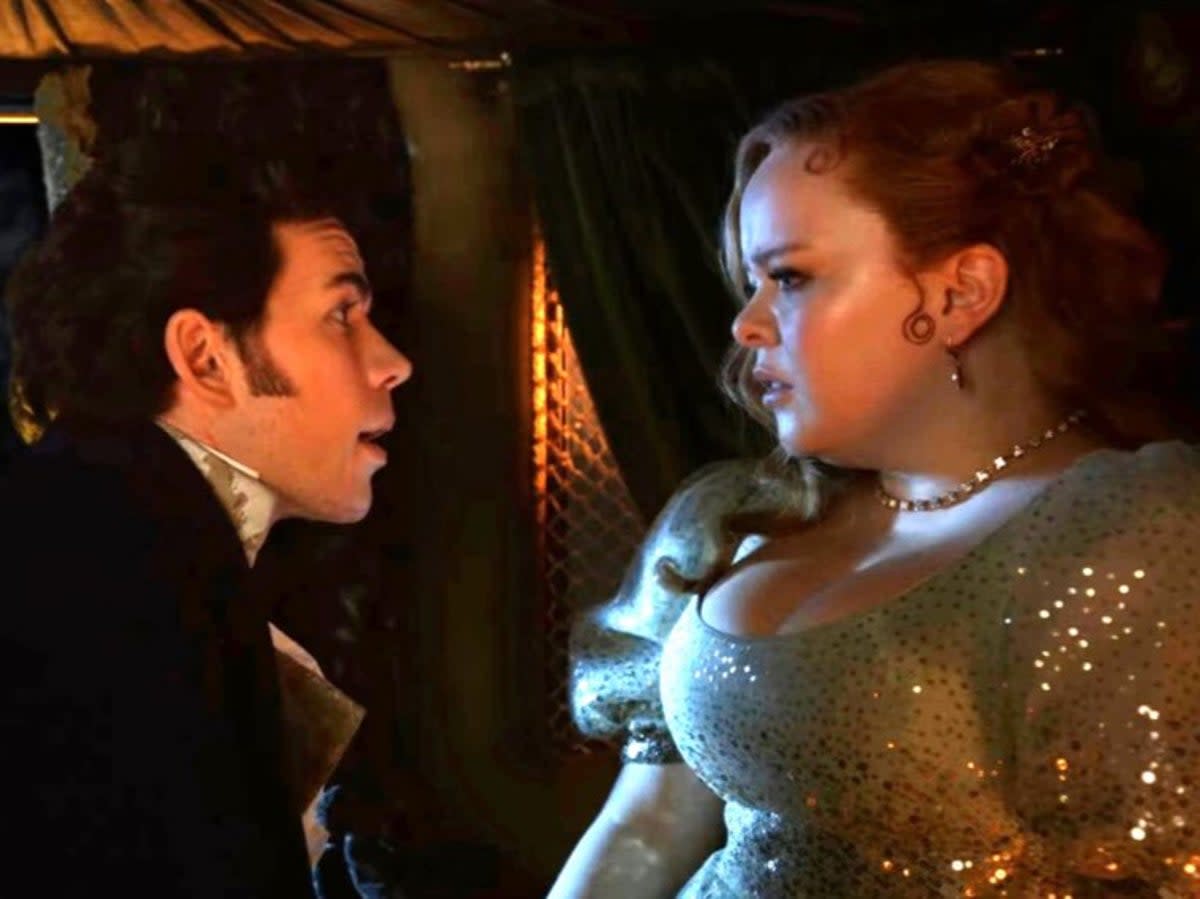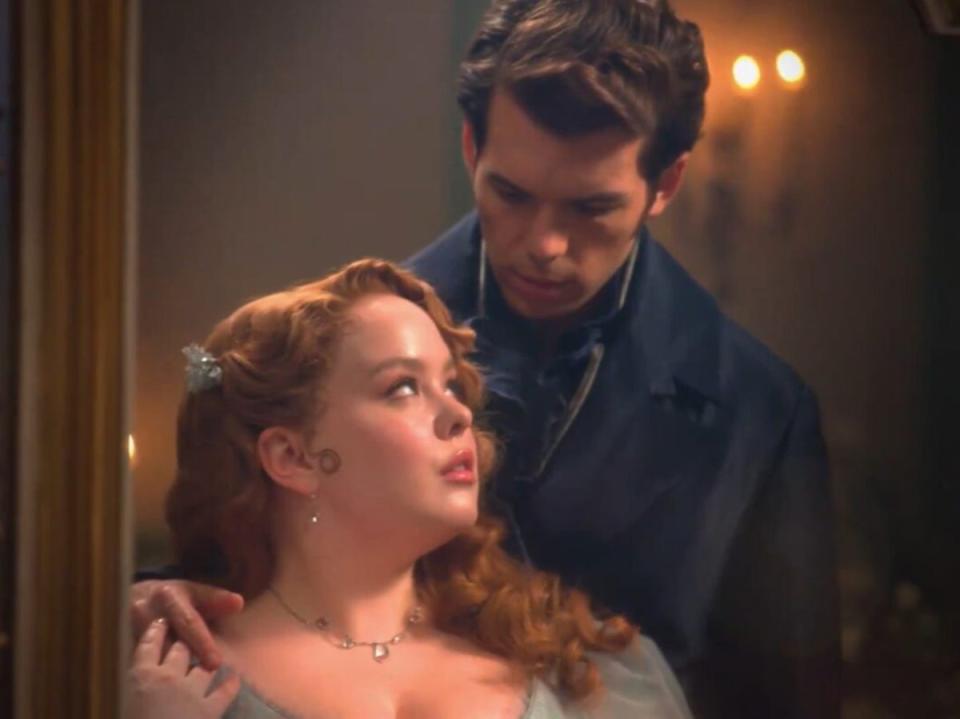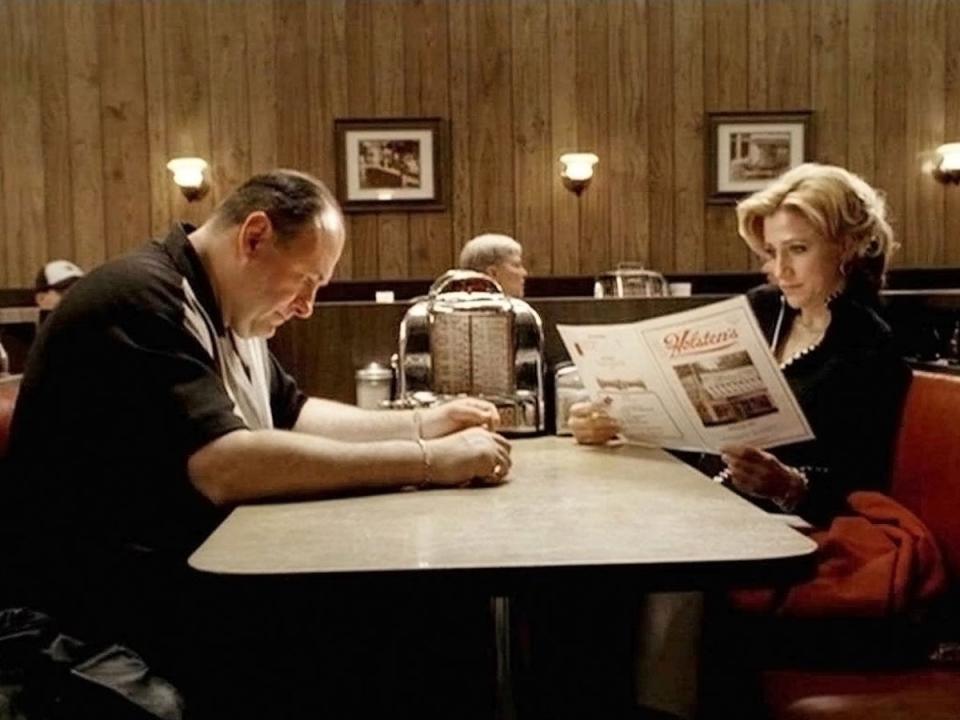‘Mixed-weight’ relationships on screen are nothing new – but it’s always women who have to be thin

Are We Still Not Ready For A Mixed-Weight Romance On Screen?”
This headline, referring to season three of the Netflix sensation Bridgerton, triggered a wave of fury and disbelief across the internet.
“‘Mixed-weight relationships’ I hate it here,” tweeted one observer. “Can you please stick ‘mixed-weight romance’, as a concept, up your arse,” said another.
The Forbes piece was discussing the love story between Penelope Featherington (played by Nicola Coughlan) and Colin Bridgerton (played by Luke Newton), highlighting that some commenters online had branded the romance “unrealistic” – because Colin is thin, while Penelope is not.
There’s been a bizarre fixation on the latter’s body type in general, ranging from a Guardian article calling her “a little bit fat and a lot hot” to a downright poisonous Spectator article that stated, as if it were fact, that Coughlan “is not hot” and that the idea of a “fat girl who wins the prince” wasn’t “remotely plausible”.
First off, the inherent arrogance of presuming that any individual’s narrow idea of “hotness” should somehow be the benchmark beggars belief. But what really irritates me about this tired viewpoint, aside from the staggering idea that anyone who doesn’t meet conventional Hollywood beauty standards couldn’t possibly be considered attractive enough to play a leading lady, is the double standard.
While the Forbes article itself was in fact nuanced – it argued that thin people “desire, love and marry people who are larger than they are all of the time” – the headline was missing one vital element. “Are We Still Not Ready For A Mixed-Weight Romance On Screen Where the Woman is Fat?”, would have been more accurate. Because here’s the rub: no one seems to have a problem when it’s the man who’s not rocking a six-pack.

I grew up watching numerous shows in which the central couple or characters had a significant “weight discrepancy”, for want of a better term. But it only ever went one way: Homer and Marge Simpson on The Simpsons; Doug and Carrie Heffernen (Kevin James and Leah Remini) on The King of Queens; Peter and Lois Griffin on Family Guy; Tony and Carmela Soprano (James Gandolfini and Edie Falco) on The Sopranos; George Costa (Jason Alexander) and every single woman he dated on Seinfeld…
In the Nineties, it was seen as nothing but totally reasonable that larger-than-life John Candy would fall in love with a slender Ally Sheedy in Only the Lonely, while in the Noughties, Will Ferrell regularly bared his furry, untoned dad bod in comedies that saw him bed some of the world’s most beautiful women (Nicole Kidman, Christina Applegate, Eva Mendes, Rachel McAdams... need I go on?). Around the same time, a portly young Jonah Hill wasn’t spurned in his insulting and clumsy advances towards Emma Stone’s slim, girl-next-door character in Superbad.
In fact, it’s part of a wider trope that sees distinctly average-looking men paired with Hollywood sirens – this, apparently, being “realistic” while the reverse is “implausible”. Think Jason Segel films in which no suspension of disbelief is required to accept that Mila Kunis, Kristen Bell, Cameron Diaz and Katherine Heigl would be his romantic equal; think Jack Black bagging Shannyn Sossamon and Kate Winslet in The Holiday. There are entire movies, such as She’s Out of My League, based around this very premise.

I’m not taking aim at these casting decisions – why shouldn’t the regular Joe get the girl once in a while? – but I am pointing the finger at the flagrant hypocrisy whenever the tables are turned. Take, for example, Netflix’s superb recent adaptation of the David Nicholls bestseller One Day, with the lead characters of Emma and Dexter beautifully brought to life by Ambika Mod and Leo Woodall. There was a disturbing amount of chatter at the time concerning the story not feeling “realistic”, because how could an audience be expected to believe that perfect, pretty-boy Dex would fancy smart but plain Em – even though this conceit is central to the original book?
Here’s how: love stories – the good ones anyway – aren’t some kind of endless, Love Island-esque, “survival of the hottest” beauty pageant. They’re about chemistry and connection, desire and longing, an unknowable alchemy of pheromones and magic. Looks are the very least of what makes a romantic tale interesting.
In the latest series of Bridgerton, Penelope and Colin’s spark is palpable; it leaps off the screen, electricity fizzing between gazes that linger just a little too long, hands grazing hands and sending shivers down spines. Who cares what dress size Coughlan, an undeniably skilled actor (and in my book pretty damn hot), is wearing upon her exquisitely heaving bosom as she gets expertly ravished in the back of a carriage?
Speaking of which, she gave the perfect response when told by a fan she was “very brave” to bare her body in Bridgerton. “You know, it is hard because I think women with my body type – women with perfect breasts – don’t see ourselves on screen enough,” she replied. “I am very proud as a member of the perfect-breasts community. I hope you enjoy seeing them.” I’m pretty sure most people did. So perhaps we should all take a leaf out of her book: ignore the nonsense, let go of antiquated notions of hotness, and hurl the irredeemably terrible term “mixed-weight romance” directly into the heart of the sun.


